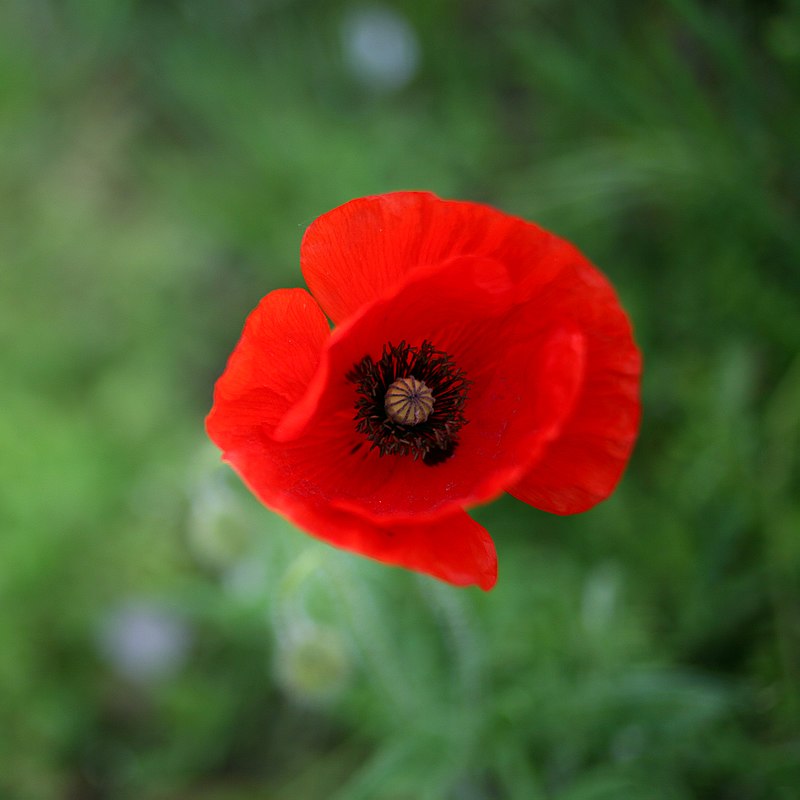
Also known as common poppy, field poppy, and Flanders poppy, this annual wildflower is native from Africa to temperate and tropical Asia and Europe, and is a member of the poppy family, Papaveraceae, that also includes bleeding heart and corydalis. A wall painting in the room of a modest house in ancient Pompeii, the House of the Fruit Orchard (I.ix.5), shows common poppies along with roses, Madonna lilies, Viburnum tinus and other unidentified flowers. The ancient Roman Naturalist, Pliny the Elder (died 79 AD), tells us that it was used as a powerful purgative, to produces sleep, and to cure diseases in the throat. Photo Credit Paolobon140-Wikimedia-Commons.jpg
The plant grows 8-18″ tall and has hairy, irregularly pinnate leaves that are up to 6″ long and have coarsely-toothed margins. The flowers appear on bristly-hairy stems from late spring to mid-summer and are up to 4″ across. They have 4-6 overlapping papery petals with a black blotch at their base and are usually red but may be purple or white. The flowers give way to a many-seeded capsules that explodes its content when ripe. The seed lie dormant in the soil for up to 80 years and germinate when the soil is disturbed.
Size: 8-18″ H x 6-12″ W
Light: Full sun with light afternoon shade in hot areas
Soil: Average, medium moist, well drained; does not tolerate overly moist or dry soils.
Hardiness: Annual